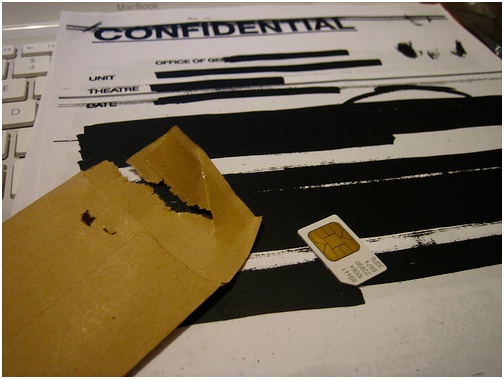The telephone changed the world and birthed a new way of doing business. When transmitting documents via those same phone lines first arrived on the scene, it was almost like witnessing magic. In the late 1980s, the squealing sound of the facsimile machine ? or ?fax? machine ? became part of the modern office?s background music. We had entered a new age of speed and convenience in document sharing.
Soon, nearly every office was using the new-aged tool to receive nearly 1 page per minute, even if they needed to send something halfway across the world. Contracts, proposals, and other very important and time-sensitive documents were no longer delayed by the limitations of postal or courier services. The pace of business quickened even more.
Now, new technology has brought us even further. The fax machine of the past millennium required a complex system of printing, scanning, transmitting, receiving, and then reprinting. These machines are quickly becoming a thing of the past with the advent of online faxing. You may now send and receive documents via your laptop, notebook, and even your smartphone ? anything with an Internet connection. Not only is this method infinitely more convenient, it is much safer and more secure.

(Photo Source: adactio)
Speedier and Safer
Instead of waiting for the call, the download, and the eventual printout, you may now use online faxing to receive a PDF document via email. You may choose to print and/or save the document from that point, depending on your needs. If you fax a document, it no longer has to be printed, delivered to the machine, dialed out, scanned, and sent because you send it directly from your Internet-linked device. No more looking for phone numbers, dialing a ?9? to get an outside line, or waiting for a machine to kick in; the moment your fax completes, it?s available to the receiver.
As for online safety? With more reputable online fax services, you can access your account via a password-protected SSL-encrypted website. Some of the better services also offer TLS encryption for email messages so that data-sensitive transmissions are protected.
?
(Photo Source: xcabelle )
No Paper
Fax machines require a paper printout, which wastes paper unnecessarily and can share sensitive data with others. Since most of us don?t have time to stand and stare at the fax machine waiting for our documents, and nearly every office shares 1 machine among several workers and/or departments, the chances are very, very high that any and all paperwork transmitted across normal fax lines will be viewed by others. This does not bode well for anyone working with sensitive information. It opens you up to stolen information at worst and embarrassment at best.
With online faxing services, you no longer must print?and?scan your documents, meaning that they leave no paper trail?and?reducing the chance of an important document getting lost or falling into the wrong hands. You can receive faxes 24 hours a day, 7 days per week and probably have less fear about somebody else accessing them.
Not only does having your faxes digitally available facilitate in indexing and storage, but you are also using the protection of your computer?s security software, which is much safer than your office?s wire basket for stray faxes.
No Spam, No Scams
The United States Secret Service has been investigating fraud cases revolving around unsolicited faxes. These scam artists simply blast out their requests to any and all numbers that will accept a fax. Many unwary people have fallen prey to these solicitations and have had to deal with stolen identity issues or lost funds. At the very least, these scams and advertisements are a waste of paper, ink, and energy.
As annoying as fax spam is, it?s impossible to guarantee full protection. However, even if the scammers are getting smarter and are able to use the Internet as well as fax numbers, your spam filtering and that of your online fax provider can help to protect you from their attempts.

(Photo Source: AMagill)
Better Than a Phone Line?
With added features such as API integration, multiple lines, and web-based services, it is also more convenient and often less expensive for businesses of any size.
Online fax services provide speed, cost savings, and value that we didn?t previously see with traditional fax machines. Here?s to technology making a better world ? and business environment!
More Popular Stories:
Source: http://www.businesspundit.com/security-of-online-faxing/
bald barbie peoples choice awards friends with kids andy cohen andy cohen deplorable mls draft
 Grunniens Yak Ranch, a farm page I ?like? on Facebook
Grunniens Yak Ranch, a farm page I ?like? on Facebook


 Editor’s note:?Verne Kopytoff is a technology journalist who lives the the Bay area. A college textbook can cost a staggering $200. Over four years of study, students can easily spend thousands of dollars on books on top of a hefty tuition. The situation is not much better in public elementary, middle and high schools, where taxpayers pick up the bill. California spends around $100 on every math and science book for its 2 million high school students, for example. But textbooks don?t have to be such a financial burden. Free digital open source textbooks are a promising alternative for states looking to cut costs and for universities trying to spare students from the soaring price of higher education. A growing number of laptop computers and tablets in the classroom provide an even greater opportunity to switch. Indeed, the fledgling open source textbook movement is getting extra attention these days. Experiments are underway in a number of states and districts. Last month, Utah?s State Office of Education said it would start a program to make open source textbooks available to students in kindergarten through 12th grade. Washington State?s legislature is considering a similar program. The idea of open source textbooks is not new. They have been around for more than a decade, a period in which the major commercial publishers hiked textbook prices faster than inflation. Until recently, however, open source textbooks gained little traction, in part, because of the byzantine process for approving school books. State and local school boards, which insure that books meet standards, are not known for innovative thinking. California?s experiment with open source books started in 2009 when then Gov. Arnold Schwarzenegger, facing a huge budget shortfall, endorsed a digital textbook initiative to quickly bring digital textbooks in the classroom. The effort, however, fell far short of the revolutionary change that he had hoped for. A state body evaluated a number of digital high school textbooks as to whether they met state standards. But the review served as merely a guide for local school districts, which have the ultimate say in which books they use and are under no requirement that those books be open source. Nor does it help the cause that most open source textbooks?produced by a mix of non-profits, academics and a handful of companies?lack the polish of the major commercial publishers like Pearson and McGraw-Hill. Anyone scanning the books will immediately notice
Editor’s note:?Verne Kopytoff is a technology journalist who lives the the Bay area. A college textbook can cost a staggering $200. Over four years of study, students can easily spend thousands of dollars on books on top of a hefty tuition. The situation is not much better in public elementary, middle and high schools, where taxpayers pick up the bill. California spends around $100 on every math and science book for its 2 million high school students, for example. But textbooks don?t have to be such a financial burden. Free digital open source textbooks are a promising alternative for states looking to cut costs and for universities trying to spare students from the soaring price of higher education. A growing number of laptop computers and tablets in the classroom provide an even greater opportunity to switch. Indeed, the fledgling open source textbook movement is getting extra attention these days. Experiments are underway in a number of states and districts. Last month, Utah?s State Office of Education said it would start a program to make open source textbooks available to students in kindergarten through 12th grade. Washington State?s legislature is considering a similar program. The idea of open source textbooks is not new. They have been around for more than a decade, a period in which the major commercial publishers hiked textbook prices faster than inflation. Until recently, however, open source textbooks gained little traction, in part, because of the byzantine process for approving school books. State and local school boards, which insure that books meet standards, are not known for innovative thinking. California?s experiment with open source books started in 2009 when then Gov. Arnold Schwarzenegger, facing a huge budget shortfall, endorsed a digital textbook initiative to quickly bring digital textbooks in the classroom. The effort, however, fell far short of the revolutionary change that he had hoped for. A state body evaluated a number of digital high school textbooks as to whether they met state standards. But the review served as merely a guide for local school districts, which have the ultimate say in which books they use and are under no requirement that those books be open source. Nor does it help the cause that most open source textbooks?produced by a mix of non-profits, academics and a handful of companies?lack the polish of the major commercial publishers like Pearson and McGraw-Hill. Anyone scanning the books will immediately notice